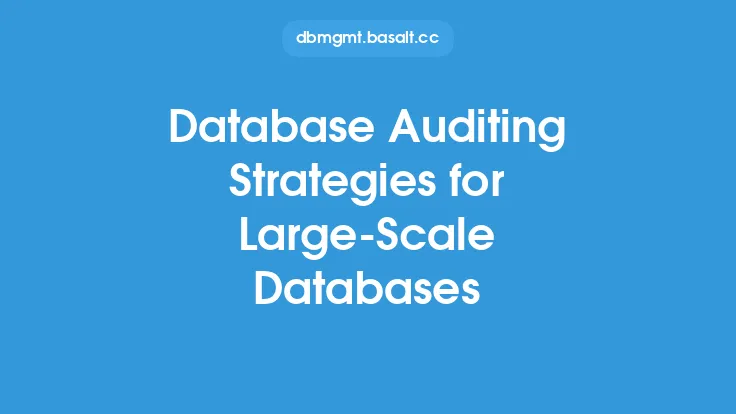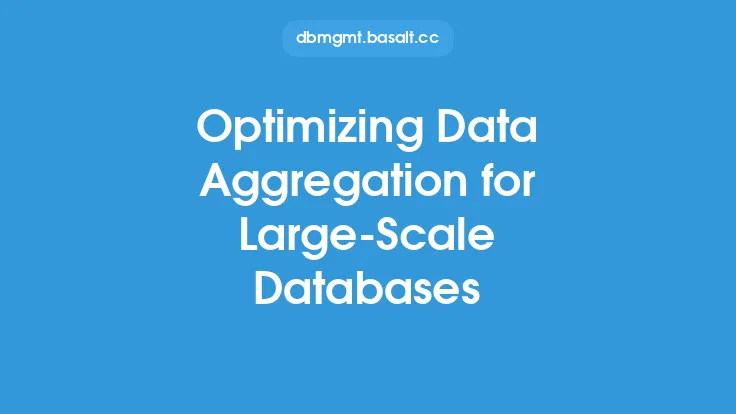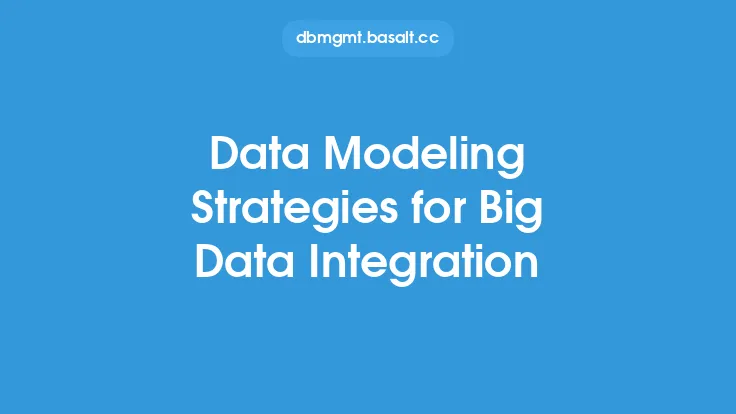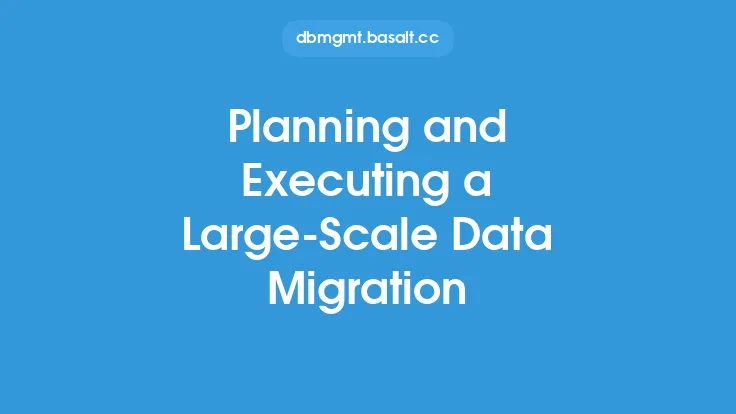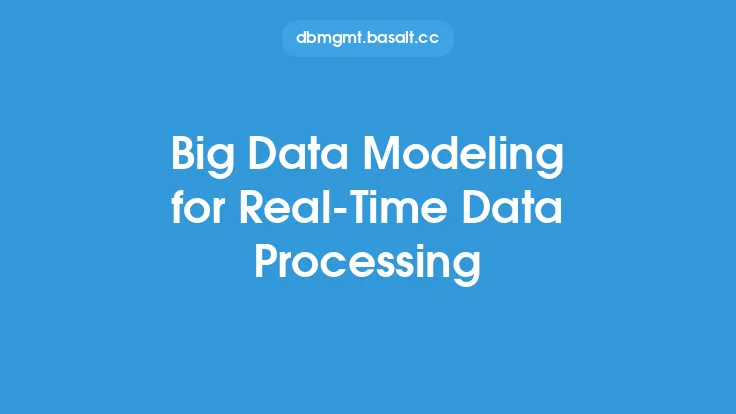Data cleansing is a critical process in data management that involves identifying, correcting, and transforming inaccurate, incomplete, or inconsistent data into a more reliable and usable format. In the context of large-scale databases and big data, data cleansing strategies are essential to ensure the quality and integrity of the data. With the exponential growth of data, it has become increasingly challenging to manage and maintain data quality, making data cleansing a vital component of any data management strategy.
Introduction to Data Cleansing Strategies
Data cleansing strategies for large-scale databases and big data involve a combination of techniques, tools, and methodologies to identify and correct data errors, inconsistencies, and inaccuracies. The primary goal of data cleansing is to improve the overall quality of the data, making it more reliable, consistent, and usable for analysis, reporting, and decision-making. Effective data cleansing strategies require a thorough understanding of the data, its sources, and its intended use, as well as the ability to identify and address data quality issues.
Data Profiling and Analysis
Data profiling and analysis are critical components of data cleansing strategies. Data profiling involves analyzing the data to identify patterns, trends, and relationships, as well as to detect errors, inconsistencies, and anomalies. This process helps to understand the data's structure, content, and quality, making it easier to identify areas that require cleansing. Data analysis, on the other hand, involves examining the data to identify specific data quality issues, such as missing or duplicate values, invalid or inconsistent data, and data formatting errors.
Data Quality Metrics and Standards
Data quality metrics and standards play a crucial role in data cleansing strategies. Data quality metrics provide a way to measure the quality of the data, while data quality standards define the acceptable levels of data quality. Common data quality metrics include accuracy, completeness, consistency, and timeliness, while data quality standards may include rules for data formatting, data validation, and data normalization. By establishing clear data quality metrics and standards, organizations can ensure that their data meets the required levels of quality and integrity.
Data Cleansing Techniques
Data cleansing techniques are used to correct, transform, and standardize data to improve its quality and integrity. Common data cleansing techniques include data validation, data normalization, data transformation, and data matching. Data validation involves checking the data against a set of rules or constraints to ensure its accuracy and consistency. Data normalization involves transforming the data into a standard format to reduce data redundancy and improve data integrity. Data transformation involves converting the data from one format to another, while data matching involves identifying and merging duplicate records.
Data Cleansing Tools and Technologies
Data cleansing tools and technologies are essential for efficient and effective data cleansing. These tools and technologies include data quality software, data integration tools, and data governance platforms. Data quality software provides a range of data cleansing capabilities, including data profiling, data validation, and data transformation. Data integration tools enable the integration of data from multiple sources, while data governance platforms provide a framework for managing data quality and integrity. By leveraging these tools and technologies, organizations can streamline their data cleansing processes and improve the overall quality of their data.
Data Cleansing in Big Data Environments
Data cleansing in big data environments presents unique challenges and opportunities. Big data environments involve large volumes of data from diverse sources, making data cleansing a complex and time-consuming process. However, big data environments also provide opportunities for advanced data cleansing techniques, such as machine learning and artificial intelligence. By leveraging these techniques, organizations can automate their data cleansing processes and improve the overall quality of their data.
Data Cleansing and Data Governance
Data cleansing and data governance are closely related concepts. Data governance involves the management of data quality, integrity, and security, while data cleansing involves the correction and transformation of data to improve its quality and integrity. Effective data governance requires a clear understanding of data cleansing strategies and techniques, as well as the ability to implement and enforce data quality standards and policies. By integrating data cleansing and data governance, organizations can ensure that their data is accurate, complete, and consistent, and that it meets the required levels of quality and integrity.
Best Practices for Data Cleansing
Best practices for data cleansing involve a combination of techniques, tools, and methodologies. These best practices include establishing clear data quality metrics and standards, implementing data profiling and analysis, using data cleansing techniques and tools, and integrating data cleansing with data governance. Additionally, best practices for data cleansing involve ongoing monitoring and maintenance of data quality, as well as continuous improvement of data cleansing processes and techniques. By following these best practices, organizations can ensure that their data is accurate, complete, and consistent, and that it meets the required levels of quality and integrity.
Conclusion
In conclusion, data cleansing strategies are essential for large-scale databases and big data environments. These strategies involve a combination of techniques, tools, and methodologies to identify and correct data errors, inconsistencies, and inaccuracies. By establishing clear data quality metrics and standards, implementing data profiling and analysis, using data cleansing techniques and tools, and integrating data cleansing with data governance, organizations can ensure that their data is accurate, complete, and consistent, and that it meets the required levels of quality and integrity. Effective data cleansing strategies require a thorough understanding of the data, its sources, and its intended use, as well as the ability to identify and address data quality issues. By following best practices for data cleansing and leveraging advanced data cleansing techniques and tools, organizations can improve the overall quality of their data and make better-informed decisions.
